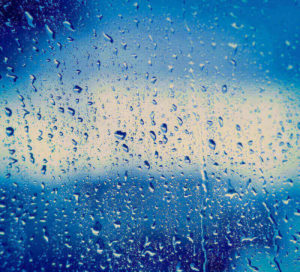Your chimney vents your fire during winter, but it works year-round to keep water and weather out too. The parts of the chimney that work to keep water out are the most important and need to be maintained properly to keep working. When it falls into disrepair or takes on minor damage, the chimney will stop keeping precipitation out. In fact, when you allow water inside your system, this wreak havoc all through it.
Masonry and Water
 Due to the various materials which make up your chimney, masonry is highly affected by water and moisture. It is highly porous, which allows the smoke and heat to escape. The properties that make it great chimney material also make it a great place for water to get in, which can cause tremendous damage to your chimney structure.
Due to the various materials which make up your chimney, masonry is highly affected by water and moisture. It is highly porous, which allows the smoke and heat to escape. The properties that make it great chimney material also make it a great place for water to get in, which can cause tremendous damage to your chimney structure.
Over time, the masonry become damaged with cracks, gaps, and holes. These spaces can become filled with water when it rains or snows. As the temperature drops, the moisture in the space freezes and expands. As it expands, it breaks apart the mortar and bricks, making the gaps and cracks bigger. As the day progresses or a fire is lit, the chimney warms up and the water melts, moving the water further into the damaged masonry. This process repeats itself especially throughout winter, causing minor cracks to become major damage. This process is called the freeze and thaw cycle. This process creates water damage, and it can affect your chimney as well as the rest of your home.
Water Damage
Water can do tremendous damages to your system, and it can even cause a collapse if you don’t take care of it. Some of the most common water damages found with your masonry chimney are the following.
- Rust – Once water enters your chimney system, it can rust metal assemblies and components as well as accessories, hinges, connections, and even other metal parts of your house.
- Deterioration – Rust is very unsightly, but it also leads to serious deterioration of chimney parts. In addition to the chimney itself, water can deteriorate firebox assemblies, central heating systems, and flue liner.
- Rot – Water causes wood flooring, wall coverings, and adjacent wood to rot. It also causes decay of the exterior and interior mortar.
- Stains – If you have found red and brown stains near the top of the chimney exterior, it is likely caused from the cap rusting from water. The white stains on the exterior of a chimney are caused from minerals left behind. Interior stains are caused from water and bacteria, but stains don’t only affect the masonry. It also affects your walls, floors, and ceilings.
- Leaks – When water enters your chimney, it will move through the walls, floors, and ceilings, until it reaches the lowest point. Then, it forms a leak. This leak may occur near the chimney or on the other side of the house. These leaks can cause mold and mildew as well as damage to furniture and other goods.
Prevention
You can also prevent the freeze/thaw cycle from affecting your chimney when you maintain your chimney properly. Routine chimney sweeps and annual inspections can help identify problems with your system. Minor cracks can be repaired to prevent the freeze/thaw cycle, and when you invest in waterproofing services can keep water out for good.
If you’re concerned about winter damage, you can have your chimney assessed and addressed right away. A small investment now can save you in repairs this spring. Call The Mad Hatter now at 317-596-0200.
